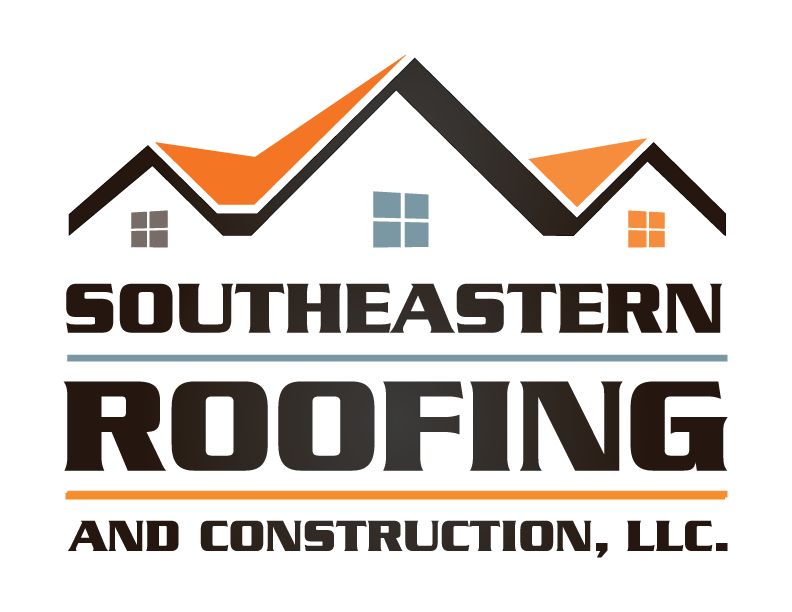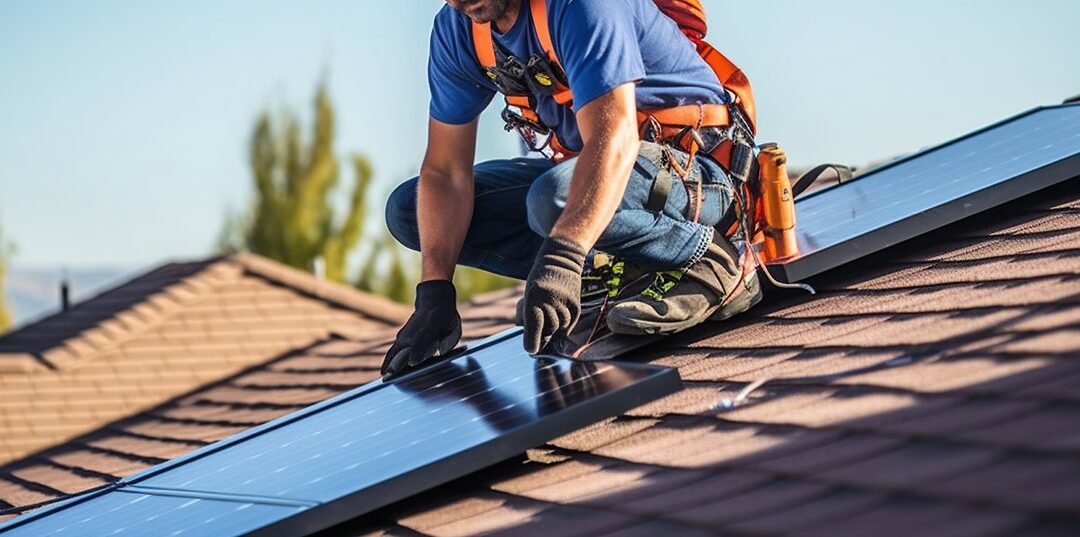Are you tired of sky-high energy bills and feeling like your home is leaking energy?
Look no further! We have scoured the roofing market to bring you the 7 best options for maximum energy efficiency. From metal roofs that reflect heat to cool roofs that minimize heat absorption, we have the solutions you need.
Join us as we explore the world of green roofs, solar roofs, foam roofs, clay tile roofs, and synthetic slate roofs. Say goodbye to wasted energy and hello to belonging to an energy-efficient community.
Key Takeaways
- Metal roofs offer superior energy efficiency compared to other roofing options.
- Cool roofs, such as those with reflective coatings or light-colored materials, maximize energy efficiency by reflecting sunlight and minimizing heat absorption.
- Energy-saving roof materials, like cool roofs, significantly increase the energy efficiency of buildings by reducing heat absorption and lowering the need for air conditioning.
- Cool roofs provide a range of benefits, including energy savings, cost-effectiveness, extended roof lifespan, and improved occupant comfort.
Metal Roofs
Metal roofs offer superior energy efficiency compared to other roofing options. When it comes to metal roof installation, it’s important to ensure proper insulation and ventilation. This helps to minimize heat transfer and maximize energy savings.
Additionally, metal roofs have a high solar reflectance, meaning they reflect a significant amount of sunlight, reducing the amount of heat absorbed by the roof. This leads to a cooler home and lower energy costs.
In terms of maintenance, metal roofs require minimal upkeep. Regular inspections and cleaning can help prevent debris buildup and ensure optimal performance. Periodic checks for any loose fasteners or damaged panels are also recommended.
Cool Roofs
Cool roofs are an excellent option for maximizing energy efficiency in buildings. These energy-saving roof materials have numerous benefits, including reducing cooling costs and improving indoor comfort.
The installation process for cool roofs involves applying a reflective coating or using light-colored materials to reflect sunlight and minimize heat absorption.
Energy-Saving Roof Materials
After researching different roofing options, we found that using energy-saving roof materials, such as those known as cool roofs, can significantly increase the energy efficiency of buildings. Sustainable roofing and eco-friendly materials are becoming more popular as people recognize the importance of reducing their carbon footprint and conserving energy.
Cool roofs are designed to reflect more sunlight and absorb less heat compared to traditional roofing materials. They achieve this by using reflective coatings or light-colored materials. By reducing the amount of heat absorbed by the roof, cool roofs can help lower the temperature inside the building, reducing the need for air conditioning and ultimately saving energy.
In the next section, we’ll explore the numerous benefits of cool roofs in more detail.
Benefits of Cool Roofs
We frequently experience the benefits of cool roofs as they actively contribute to maximum energy efficiency in our buildings. Cool roofs, also known as reflective roofs, are designed to reflect more sunlight and absorb less heat compared to traditional roofs. This results in several advantages of cool roofs.
Firstly, they help to reduce the amount of heat that’s transferred into the building, thus lowering the need for air conditioning and reducing energy costs.
Secondly, cool roofs can extend the lifespan of the roof by reducing thermal expansion and contraction, which can cause damage over time.
Additionally, cool roofs contribute to a more comfortable indoor environment, as they can help to reduce indoor temperatures and improve occupant comfort.
Now, let’s explore the cool roof installation process.
Cool Roof Installation Process
Once the benefits of cool roofs have been understood, it’s important to explore the cool roof installation process.
Installing a cool roof involves several steps that ensure maximum energy efficiency. First, the existing roof is inspected to determine its condition and suitability for a cool roof installation. Any necessary repairs or modifications are made before the installation begins.
Next, a reflective coating is applied to the roof surface, which helps to reflect sunlight and reduce heat absorption. This coating is typically white or light-colored to maximize its reflective properties.
Finally, cool roof maintenance is crucial to ensure its longevity and effectiveness. Regular inspections and cleanings should be performed to remove debris and prevent the growth of algae or mold.
The cost of installing a cool roof will vary depending on factors such as the size of the roof and the specific materials used, but the long-term energy savings make it a worthwhile investment.
Green Roofs
Green roofs are an excellent option for maximizing energy efficiency in buildings. By adding vegetation to the roof surface, green roofs provide a range of benefits.
Firstly, they can help reduce energy consumption by providing natural insulation and reducing the need for heating and cooling.
Secondly, green roofs improve air quality by capturing pollutants and releasing oxygen.
Lastly, they enhance stormwater management by absorbing rainwater and reducing runoff, which helps minimize the strain on drainage systems during heavy rainfall events.
Reduced Energy Consumption
One option that can significantly reduce energy consumption is the use of a specific type of roofing called green roofs. Green roofs are roofs that are covered with vegetation, providing numerous benefits for both the environment and the building occupants.
One of the main advantages of green roofs is their ability to provide natural insulation, reducing the need for artificial heating and cooling. By absorbing and storing rainwater, green roofs also help to reduce the load on stormwater systems.
Additionally, the vegetation on green roofs can help to filter pollutants from the air, improving air quality. These energy-saving tips and insulation options make green roofs an excellent choice for those looking to reduce their energy consumption and create a more sustainable living environment.
Improved Air Quality
Continuing the discussion on the benefits of green roofs for energy efficiency, we can see how they contribute to improved air quality.
Green roofs offer a unique solution to air purification and can greatly enhance the indoor environment. The vegetation on green roofs acts as a natural filter, capturing and removing pollutants from the air. Through a process called phytoremediation, plants absorb harmful gases such as carbon dioxide and release oxygen, improving the quality of the surrounding air.
Additionally, green roofs can help reduce the heat island effect in urban areas, which can further improve air quality by reducing the formation of smog.
Enhanced Stormwater Management
Our research has found that utilizing green roofs can significantly enhance stormwater management capabilities.
Green roofs are designed with a layer of vegetation and a specialized drainage system that allows for rainwater harvesting and improved stormwater management. The vegetation absorbs and retains rainwater, reducing the amount of runoff that enters storm drains and overburdens municipal sewage systems. This helps to prevent flooding and erosion, while also promoting the natural filtration and purification of rainwater.
Additionally, green roofs can be integrated with permeable pavement, which further enhances stormwater management by allowing water to infiltrate the ground instead of running off into storm drains.
Solar Roofs
To maximize energy efficiency, we should consider installing solar roofs. Solar roofs, also known as photovoltaic (PV) roofs, are an excellent option for reducing energy consumption and lowering electricity bills. By integrating solar panels into the roof structure, we can harness the power of the sun and convert it into clean, renewable energy. This integration allows for seamless installation and ensures that the solar panels are securely fastened to the roof.
To determine the cost-effectiveness of solar roofs, a thorough analysis should be conducted. Factors such as the initial installation costs, potential energy savings, and available financial incentives should be considered. Although the upfront investment may be higher, the long-term benefits in terms of energy savings and environmental impact make solar roofs an attractive option for those seeking to minimize their carbon footprint and increase energy efficiency.
Foam Roofs
Foam roofs provide excellent insulation and can greatly improve energy efficiency in buildings. They’re made of a spray polyurethane foam (SPF) that’s applied directly to the roof surface. The foam expands and hardens, creating a seamless, durable, and highly insulating layer.
One of the main benefits of foam roofs is their ability to reduce heat transfer, keeping buildings cooler in the summer and warmer in the winter. This can lead to significant energy savings and lower utility bills. Additionally, foam roofs can help to minimize air infiltration, preventing drafts and improving indoor comfort.
The installation process involves cleaning and preparing the roof surface, applying the foam, and then adding a protective coating. Foam roofs are a popular choice for both residential and commercial buildings due to their energy efficiency and long-lasting performance.
Clay Tile Roofs
When considering options for maximum energy efficiency, clay tile roofs offer a durable and sustainable solution. Clay tile roofs have been used for centuries and are known for their longevity. One of the major advantages of clay tile roofs is their ability to withstand extreme weather conditions, such as high winds and heavy rains. They’re also highly resistant to fire, making them a safe choice for homeowners.
Additionally, clay tile roofs have a high thermal mass, which helps to regulate indoor temperatures and reduce energy consumption. However, there are some drawbacks to consider. Clay tiles can be expensive to install and require regular maintenance to prevent cracking or breakage. They’re also heavier than other roofing materials, which may require additional structural support.
Despite these drawbacks, the longevity and energy efficiency of clay tile roofs make them a popular choice for homeowners seeking a sustainable and long-lasting roofing option.
Synthetic Slate Roofs
Moving on to the next roofing option for maximum energy efficiency, let’s explore synthetic slate roofs.
Synthetic slate roofs are a popular choice for homeowners looking for a durable and environmentally friendly roofing material. One of the main advantages of synthetic slate roofs is their cost-effectiveness compared to natural slate roofs. Synthetic slate roofs are significantly cheaper to install and maintain, making them an attractive option for budget-conscious homeowners.
Additionally, synthetic slate roofs offer excellent insulation properties, helping to reduce energy consumption and lower heating and cooling costs.
However, it’s important to consider the potential drawbacks of synthetic slate roofs. While they’re more affordable, they may not have the same visual appeal as natural slate roofs and may not last as long. It’s crucial to weigh the pros and cons and carefully consider the cost comparison before making a decision.
Conclusion
In conclusion, when it comes to maximizing energy efficiency in roofing options, there are several choices available.
Metal roofs, cool roofs, green roofs, solar roofs, foam roofs, clay tile roofs, and synthetic slate roofs all offer their unique advantages. While some may argue that these options can be more expensive upfront, the long-term energy savings and environmental benefits make them a worthwhile investment.
By choosing one of these energy-efficient roofing options, homeowners can’t only save money on their energy bills but also contribute to a sustainable future.

